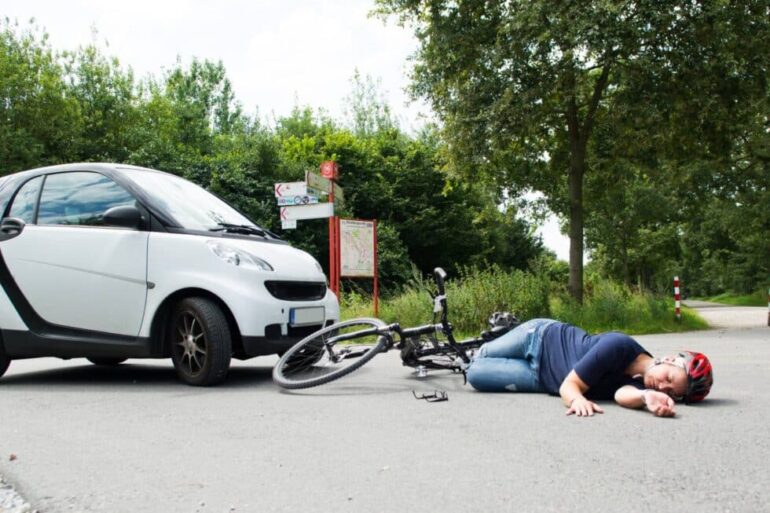Experiencing a hit-and-run is a jarring and chaotic event, often leaving victims in a state of shock and uncertainty. This guide aims to provide clear, actionable advice for those moments immediately following the incident, ensuring crucial details are not overlooked in the pursuit of rightful compensation.
The screech of tires, the sudden impact, and then silence. It can be a disorienting experience dealing with a hit-and-run. During the shock, confusion, and adrenaline, it’s crucial to know the steps to take immediately after such an incident.
You don’t want to risk missing out on the compensation that you’re owed because of missing details. Make sure you are paying attention to your surroundings and collect anything that you can use to create a strong case.
Prioritize Safety

After a hit-and-run, the main priority is that all parties are okay. Check yourself and your passengers for injuries and, if possible, move to a secure location away from traffic. Turn on hazard lights and set up warning triangles if available, to alert other drivers to the accident scene.
You want to avoid creating another accident simply because other cars can’t see it. Be sure to pay attention to what’s going on at the accident site.
Call Emergency Services
Once in a safe location, call emergency services immediately. They will be able to arrive on the scene to make sure everyone is okay. Once they arrive, tell them about the hit-and-run immediately. Make sure to provide all the details so they understand what happened.
If you feel you need medical assistance, be sure to tell them that and have them look at you. Promptly involving law enforcement sets the stage for a comprehensive investigation and increases the chances of locating the responsible party.
Document the Scene
After you have called law enforcement, start gathering important information. Take photos of the accident scene, including the aftermath of the damage, damage to the road, and anything else that looks out of the ordinary.
Note the time, date, and location of the incident. If there are witnesses, ask for their contact information as their statements may prove crucial in identifying the fleeing driver. These are considered important pieces of evidence that you can use later when building your case.
Note Vehicle Details

If you caught a glimpse of the fleeing vehicle, try to note its details. If you remember the model or make of the car, you must write that down somewhere. Even a partial plate or a distinct feature of the vehicle can be valuable information for law enforcement.
Every detail you can provide may contribute to tracking down the responsible party. While it can be intense, trying to figure out who caused the accident can get you working on how to pay for damages.
Inform Your Insurance Company
Contact your insurance company as soon as possible to report the hit and run. Give them all the information you have about the accident and explain what happened. Be sure to give them all the correct information so they can figure out how to help you.
Follow the steps they provide you and be sure to keep them updated throughout the case. Find out if your insurance company will be able to cover the accident or if you must pay out of pocket.
File a Police Report
Cooperate fully with law enforcement in filing a police report. They will be able to help you and continue looking for who caused the accident. Provide them with all the details you’ve collected and be as thorough as possible. You don’t want to leave out anything important.
A well-documented report increases the chances of a successful investigation and may contribute to locating the responsible driver.
Seek Medical Attention
Even if injuries seem minor or non-existent, it’s advisable to seek medical attention after a hit and run. Injuries may not show immediately, and a medical examination can identify hidden or latent issues. It’s best to have a medical professional give a second look before you make any assumptions.
Documenting your health status is crucial for insurance claims and potential legal actions. This can help you receive more money so be sure to keep track of your medical records during this time.
Consult with an Attorney

In hit-and-run cases, legal complexities may arise. It’s best to reach out to an attorney who understands how these cases work. They will be able to review your case to see what your best options are. Your attorney can reach out to your insurance company if you feel that they aren’t giving you the best options.
Having a legal professional on your side can ensure that your rights aren’t violated. Raising your chances of receiving not only compensation but also justice.
Gather Surveillance Footage
If the hit-and-run occurred in an area with surveillance cameras, check for footage that may have captured the incident. Businesses, traffic cameras, and residential security systems can be valuable sources of evidence.
This can be used as evidence when you’re building your hit-and-run case. Depending on the angle and quality, you might be able to see the license plate of the car. Helping you find the person who caused your accident faster.
Stay Vigilant

Even after the initial steps are taken, stay vigilant. Be sure to pay attention to any details that could lead to the driver. Cooperation with law enforcement and ongoing communication with your insurance company will contribute to a thorough and effective resolution.
It’s important to be patient during this time and not do anything impulsively. If you’re able to find the driver, be sure to let them speak to your attorney.
No one is truly prepared to be involved in a hit-and-run accident. But it’s important to be alert and to keep track of details during this time. Prioritize safety, document the scene, and involve law enforcement and your insurance company promptly.
Seeking legal advice and staying vigilant can make a significant difference in resolving the case. While the emotional impact may linger, knowing you’ve taken the necessary actions can bring a sense of control and justice to an otherwise chaotic situation.
